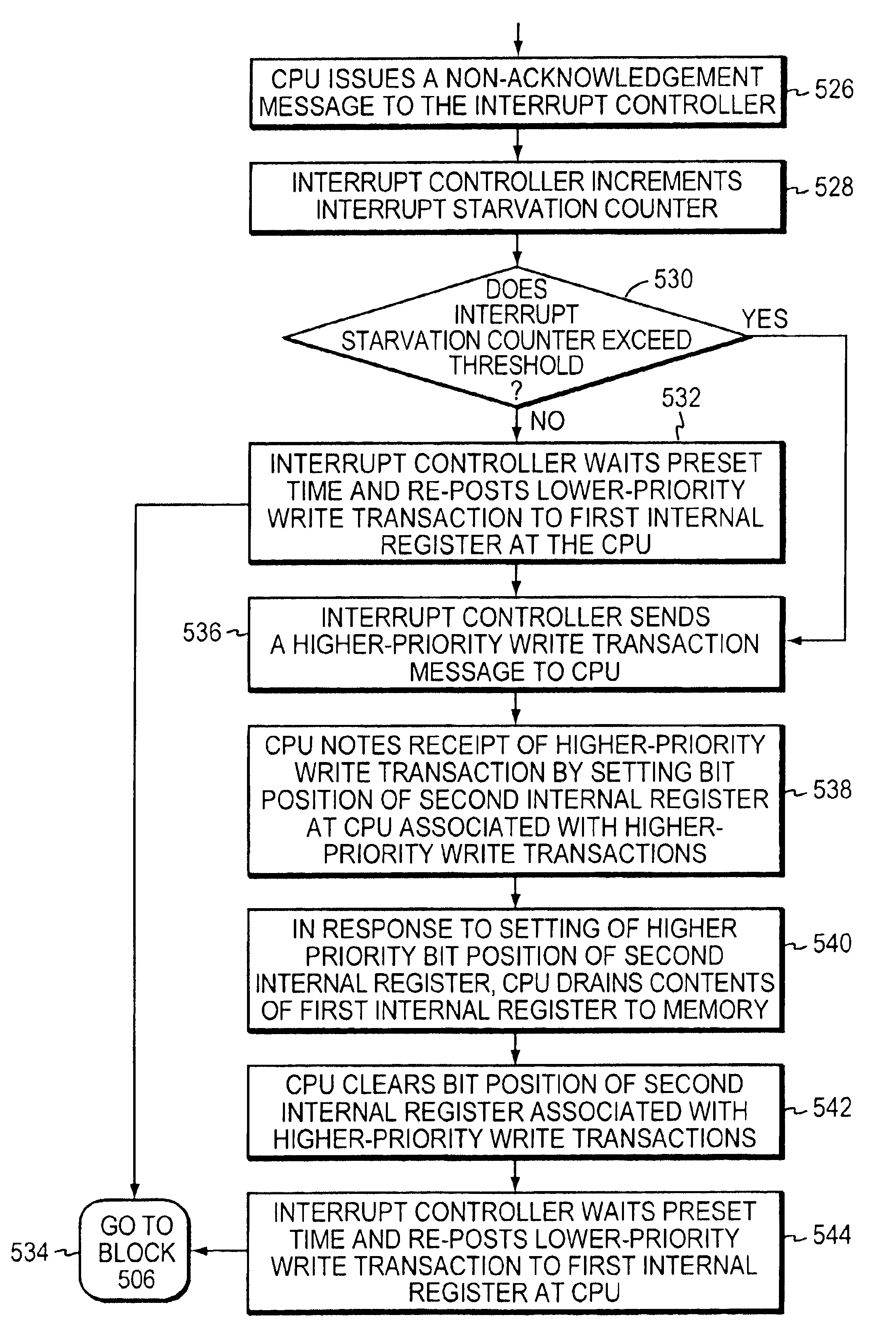Anti-starvation interrupt protocol
interrupt technology, applied in the field of multi-processor computer architectures, can solve the problems of overflowing processor resources, livelock condition, and one or more i/o devices not getting serviced in a fair or reasonable manner, and achieve the effect of avoiding livelock in a multi-processor computer system
- Summary
- Abstract
- Description
- Claims
- Application Information
AI Technical Summary
Benefits of technology
Problems solved by technology
Method used
Image
Examples
Embodiment Construction
[0018]FIG. 1 is a schematic block diagram of a symmetrical multiprocessor (SMP) system 100 comprising a plurality of processor modules 102 interconnected to form a two dimensional (2D) torus or mesh configuration. Each processor module 102 preferably comprises two central processing units (CPUs) or processors 104 and has connections for two input / output I / O ports (one for each processor 104) and six inter-processor (IP) network ports. The IP network ports are preferably referred to as North (N), South (S), East (E) and West (W) compass points and connect to two unidirectional links. The North-South (NS) and East-West (EW) compass point connections create a (Manhattan) grid, while the outside ends wrap-around and connect to each other, thereby forming the 2D torus. The SMP system 100 further comprises a plurality of I / O subsystems 106. I / O traffic enters the processor modules 102 of the 2D torus via the I / O ports. Although only one I / O subsystem 106 is shown connected to each process...
PUM
 Login to View More
Login to View More Abstract
Description
Claims
Application Information
 Login to View More
Login to View More - R&D
- Intellectual Property
- Life Sciences
- Materials
- Tech Scout
- Unparalleled Data Quality
- Higher Quality Content
- 60% Fewer Hallucinations
Browse by: Latest US Patents, China's latest patents, Technical Efficacy Thesaurus, Application Domain, Technology Topic, Popular Technical Reports.
© 2025 PatSnap. All rights reserved.Legal|Privacy policy|Modern Slavery Act Transparency Statement|Sitemap|About US| Contact US: help@patsnap.com



